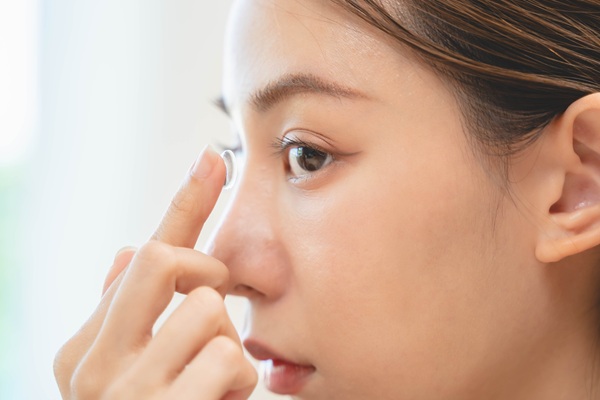Preventing Eye Strain for Vision Care

Proper vision care can address eye strain and reduce its uncomfortable symptoms. An optometrist will also help to prevent future eye strain. Thus, while there are many ways to strain your eyes, there are many changes you can make to give them a break.
Common symptoms and causes
Straining the eyes can bring all sorts of symptoms. As a result, many patients do not realize eye strain is the root of some of their problems. Common signs and symptoms of eye strain include:
- Watery or irritated eyes
- Red or dry eyes
- Tired eyes
- Eye aches
- Headaches
- Blurred vision
- Neck, shoulder, and back pain
According to Healthline, eye strain often results from focusing too much on one task for too long. Stress, fatigue, working in poor lighting, and prolonged screen use are other causes. Some people experience eye strain from wearing prescription glasses or contact lenses that are too weak or strong.
Tips for preventing and reducing eye strain
Eye strain not only brings discomfort, but over time, it can damage one's vision. Follow these vision care tips to prevent eye strain or reduce it:
Take breaks with the 20-20-20 rule
Since eye strain often results from overfocusing on a task, it is important to take breaks. This applies regardless of whether the task is driving, reading, watching television, using a computer, or anything else. A good way to ensure one takes enough breaks is to follow the 20-20-20 rule—every 20 minutes, take a 20-second break to look at something about 20 feet away.
Make sure screens are at the right level
Positioning screens correctly can help prevent eye strain. As per Healthline, any digital screen should be positioned at or slightly below eye level. It should also be about an arm's length away, not too close to the face. To ensure the positioning remains correct for screens like computers, try to maintain good posture when using them.
Try eye drops
Eye drops, or artificial tears, alleviate dryness and irritation in the eyes. Most drug and grocery stores sell eye drops over the counter (OTC), and an optometrist can help patients select one. Patients can use these throughout the day to lubricate the eyes as needed. To prevent eye infections, patients should always wash their hands before applying them and never let the applicator tip touch anything, including surfaces.
Wear sunglasses outside
Exposure to bright light, including sunlight, can easily lead to eye strain. Fortunately, sunglasses can reduce glare, make it easier to see, and relax the eyes. Many tints can also help on gloomy, overcast days. An optometrist can recommend different tinted lenses (gray, purple, yellow, etc.) to fit each patient's needs.
Take lighting into consideration
Similar to sunlight, a room's or screen's brightness can strain the eyes. Patients can dim the lights during various activities, such as watching television, to give the eyes a break. Alternatively, do not read or do other focused work in poor lighting. It can help to read or work under a lamp.
As for screen brightness, patients can dim it to help potentially ease the strain. There are even software applications and settings that can adjust the color temperature of a screen's display to be easier on the eyes. Default settings tend to be bright and cool (i.e., blue light). Switching over to dimmer, warmer tones is known to prevent and reduce eye strain.
Get a custom prescription
If vision correction is needed, the eyes can become overworked and strained without it. An optometrist can check a patient's vision and create a custom prescription in the same appointment as a routine eye examination. During the process, the patient will read letters off an eye chart. If they have trouble seeing the smallest letters, the optometrist will then ask the patient to look at the chart through an assortment of lenses. After cycling through various lenses, the optometrist will have created a prescription customized to the patient.
During these appointments, the eyes are also checked for signs of disease. Examples include macular degeneration and cataracts. Early treatment of these diseases preserves vision.
Learn more about eye strain prevention
Preventing and relieving eye strain is one of the primary goals of vision care. Not only does this improve patient comfort, but it also helps preserve the vision by not overworking the eyes. If you have noticed the symptoms of eye strain or simply want to prevent it, contact our Dallas office today for an appointment.
Request an appointment here: https://www.texasoptical.net or call Texas Optical at (214) 771-7333 for an appointment in our Dallas office.
Check out what others are saying about our services on Yelp: Read our Yelp reviews.
Recent Posts
For those living with diabetes, undergoing a diabetic eye exam is one of the most important steps in protecting their vision and overall eye health. High blood sugar levels can lead to a range of complications, including conditions that damage the eyes over time. These exams help detect these issues before they become serious, allowing…
Contact lenses provide clear vision and convenience for individuals who prefer an alternative to eyeglasses. However, proper care and maintenance are essential to prevent infections, irritation, and eye damage. Neglecting hygiene practices can lead to serious eye conditions, including corneal ulcers and keratitis. Understanding how to clean, store, and handle contact lenses ensures long-term eye…
Maintaining eye health and preventing long-term issues is the result of consistent and quality vision care. Many people focus on overall wellness but may overlook daily habits that support healthy eyesight. However, taking simple steps each day can protect vision, reduce eye strain, and prevent future complications. By making eye health a priority, it is…
Prescription contacts provide vision correction, comfort, and convenience for those who do not want to wear glasses. However, caring for and wearing contacts takes some getting used to. Learning to insert, remove, and maintain them will help ensure a comfortable and safe experience.Not all contact lenses are the same, and choosing the right pair is…


